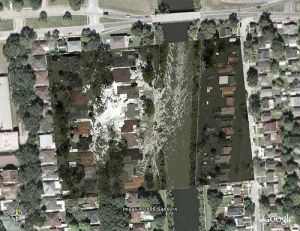Vital Systems Security
 In recent years a series of catastrophes in the United States has starkly posed the question of government responsibility for anticipating and managing emergencies. From the terrorist attacks of 9/11 and the anthrax letters that followed soon after, to Hurricane Katrina, to the financial crisis and the Gulf oil spill, catastrophic events have been followed by widespread criticisms of the government’s lack of preparedness.
In recent years a series of catastrophes in the United States has starkly posed the question of government responsibility for anticipating and managing emergencies. From the terrorist attacks of 9/11 and the anthrax letters that followed soon after, to Hurricane Katrina, to the financial crisis and the Gulf oil spill, catastrophic events have been followed by widespread criticisms of the government’s lack of preparedness.
It is striking that in diverse policy arenas – domestic security, public health, natural disaster protection, and financial regulation – we find a shared understanding in political discourse both of what constitutes a catastrophe and of the expected government role in preparing for and responding to potentially catastrophic events. Catastrophes are understood as sudden and unpredictable events that disrupt the systems that are critical to economic and social life. And government is held responsible for reducing vulnerability to such events as well as for ensuring the operation of critical systems in their wake.
Amidst the often-rancorous debates that have followed recent catastrophes, these background assumptions have mostly gone unremarked—they are taken to be a matter of common sense. However, such common sense is the result of a relatively recent “event in thought”: it is only in the last several decades that American planners and policy-makers have come to understand collective life as dependent upon a complex of critical systems that are vulnerable to catastrophic disruption; and it is only over the same period that the vigilant protection of these systems in anticipation of emergency—“vital systems security”—has come to be regarded as a central problem for government.
For the last several years, in collaboration with Andrew Lakoff, I have investigated the genealogy and contemporary forms of vital systems security. One dimension of the project has been to trace vital systems security and governmental mechanisms for managing emergencies back to the crucibles of world war and Cold War, particularly to contexts such as war mobilization, civil defense, and nuclear preparedness. Thus, the project has examined distributed preparedness in post-World War II civil defense, the political ontology of catastrophe in Cold War domestic preparation for nuclear war, and how infrastructure became a security problem.
Our project has also examined contemporary domains in which knowledge practices and techniques of intervention associated with vital systems security have been incorporated into governmental practice. For example, I have investigated how the norms of vital systems security have been incorporated into natural disaster policy in the United States, including in the article “Enacting Catastrophe” (in Economy and Society) and in “Neoliberalism and Natural Disaster” (Journal of Cultural Economy). Lakoff and I also co-edited Biosecurity Interventions, which examines how vital systems security and other governmental rationalities are being mobilized and contested in response to new biological threats.
Along with Lakoff, I am working on a manuscript that examines the government of catastrophe in the United States over the last one-hundred years.
Related publications:
- “Vital Systems Security: Reflexive Biopolitics and the Government of Emergency.” Theory, Culture, and Society 32, 3, 2015.
- “Neoliberalism and Natural Disaster: Insurance as Political Technology of Catastrophe” Journal of Cultural Economy 7, 30, 2014.
- “The Political Ontology of Catastrophe: Inventing the Vulnerable Society, 1953-1958” (2011) International Affairs Working Paper 2011-09, The New School, New York
- “Vital Systems Security” (2009)(with Andrew Lakoff) International Affairs Working Paper 2009-1, The New School, New York
- “Enacting Catastrophe.” Economy and Society 37(2), 2008, pp. 224-250.
- Biosecurity Interventions: Global Health and Security in Question (edited with Andrew Lakoff). New York: Columbia University Press, 2008.
- “Distributed Preparedness: The Spatial Logic of Domestic Security in the United States.’” (with Andrew Lakoff). Environment and Planning D: Space and Society 26, 2008, pp. 7-28
- “The Vulnerability of Vital Systems: How Infrastructure Became a Security Problem.” With Andrew Lakoff. In Myriam Dunn and Kristian Soby Kristensen, eds., The Politics of Securing the Homeland: Critical Infrastructure, Risk and Securitisation. Routledge, 2008.

Trackbacks & Pingbacks